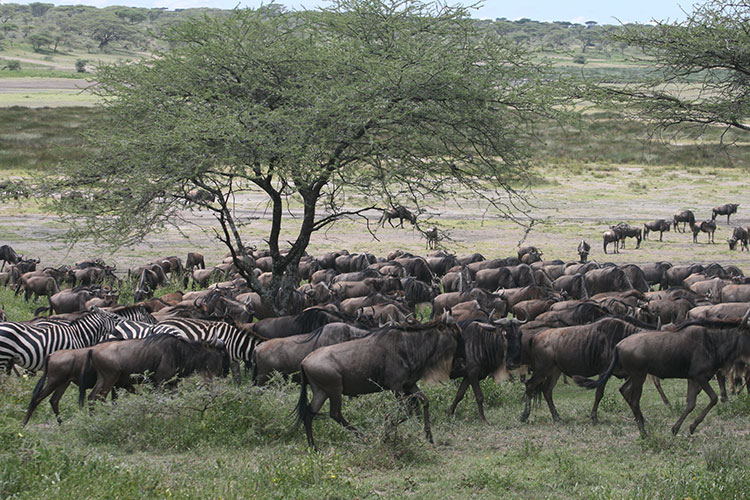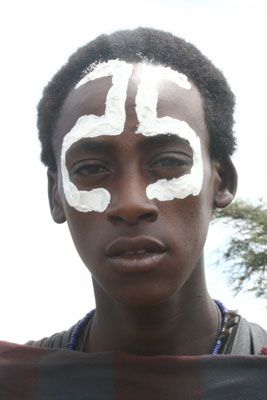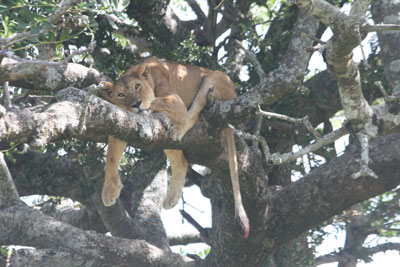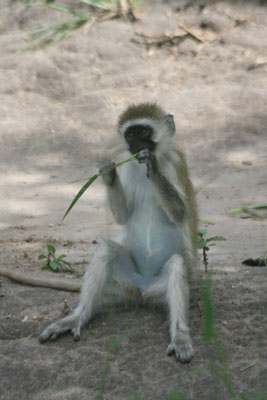In the middle of it all – experiencing the Great Migration in Tanzania
This article appears on page 52 of the September 2013 issue.
By Joyce Bruck, Ocean Ridge, FL
Africa is one of my favorite travel destinations. My most recent visit, in March 2013, included the annual migration in Tanzania.
Once a year, herds of wildebeests, zebras, antelope and other animals move with their calves from countries like Tanzania and Kenya to locations where grass and water are plentiful, returning later in the year. In areas such as the Serengeti, Ngorongoro Crater and Ndutu, the animals gather in the hundreds and thousands to march across the plains and crocodile-infested rivers to their destinations. Along the way, many fall prey to leopards and lions in addition to thirst and disease.
Preparations
In preparation for my trip, I got a documented tetanus shot and written confirmation that my yellow fever vaccination was still good, and I bought a “Z” pack (azithromycin*) for infection, generic malaria pills (that I kept forgetting to take), a few different types of insect repellent and sunscreen. I took all light-colored clothing, long-sleeved shirts, long pants and a hat to shield my face from the sun. A visa was required for Tanzania.
During my research to find a local company that could handle the entire Tanzania portion of my trip (I also planned to visit Botswana), I received a recommendation for an African company owned by Karen Dyer, African Eden Safaris (PO Box 1606, Arusha, Tanzania; phone +255 784 638 478). The drivers and guides work only for her and, in my case, the vehicles used belonged to her. During the trip, the company was in contact on a steady basis.
My cost for a one-person custom tour was $5,325, which included most meals.
I prefer to deal with local tour companies, as, many times, a larger company might put together the package but hire someone locally to run the tour; the traveler pays the added expense.
At the end of my trip, I tipped my driver/guide, Dayo, $260 because he was so helpful, enabling me to get good pictures and getting me on the charter plane. In each hotel there was a “tip box” for the staff. This was much easier than having to tip porters, servers, maids, etc., individually.
The journey begins
After leaving Miami and changing planes in Atlanta and Amsterdam, I arrived at the Kilimanjaro Airport in Tanzania. I was transferred to the nearby KIA Lodge, a hotel with several bungalows and a dining hall.
Before going to sleep, I wrapped my mosquito net around the bed, sprayed here and there for insects, then prepared my attire and equipment for my first morning. Finally, I fell asleep, ready for my adventure to begin.
Dayo was there on time with our vehicle to begin the first morning, and we headed to Arusha to meet Karen Dyer. Over tea at a local shop, Karen described the routine for the next few days and gave me a hat and a medicine pouch (which I did not use, since I was carrying everything I might need).
We were then on our way to the first stop, Tarangire National Park, where I stayed at the Tarangire Safari Lodge for two nights. About a mile from our camp, we were able to see lions up close before they wandered away into the bush.
My accommodations were more like a tent, with electricity that was out for several hours at night. There were no plugs for charging batteries, but this could be done in the lodge.
I was several tents away from the lodge, with a lovely view of a river far below. Impalas of all sizes roamed through the campsite.
Breakfast and lunch were buffet style, but I did not care for dinner, ordered from the menu. One night I ordered beef, which was so tough I could neither cut nor chew it, so I switched to fettuccine. The first mouthful was okay, then, as I went to fork up a second bite, a bug came crawling out. That’s Africa!
The first time I tried to walk back to my tent after dinner, the attendants came running after me saying that I was not allowed to walk alone at night, so a watchman escorted me with a flashlight. The next day I heard why: a couple of weeks before I arrived, one of the workers walking alone to the on-site housing got attacked by a lion. People came with guns to kill the lion, but the man died on the way to the hospital.
Park visits
On my third day we drove through Lake Manyara National Park. The winding road was lined with fairly dense vegetation, and many baboons and blue monkeys jumped out as we drove by. This area is known for tree-climbing lions, but we saw none.
This was not my favorite place, and in hindsight I would rather have gone somewhere else.
A short distance from there was the city/village of Karatu, the location of our hotel for the night. The Country Lodge (phone +255 27 253 4622) was surprisingly lovely, with 11 duplexes surrounding a large swimming pool. Brightly colored weavers entertained me as they flew around their homes in the nearby trees.
Dinner and breakfast were excellent, and the staff was attentive.
The next stop, for days four and five, was Ngorongoro Crater in the Ngorongoro Conservation Area, which was much more exciting than I had anticipated. Great photo opportunities presented themselves everywhere.
At the bottom of the crater, various animals mingled together in harmony — with some exceptions. At one point, spotted hyenas began chasing a wildebeest calf. There were racing hooves everywhere as the calf and surrounding wildebeests made their escape. When the dust cleared, the hyenas were leaving and the calf was protected.
We stopped often to photograph zebras with their babies cuddling close. In the distance, I even spotted a rhino (one of the Big Five). Antelopes were grazing contentedly on the lush green grass.
We joined some of the other groups touring in the crater for a boxed picnic lunch by the hippo pool. Most of the time, the hippos remained submerged, but every few minutes the large animals surfaced for air, offering us a glimpse.
The Ndutu area is an excellent place to view the large migrating herds from December through March. There we were able to drive our open-top vehicle into the center of the groups. It was so exciting to be right in the middle of the action!
My hotel for two nights was Ndutu Safari Lodge, with 34 small cabins. Brightly colored birds played in the trees and bushes in front of my bungalow, and animals such as zebras roamed the plains close by.
The manager there was very helpful in finding a remedy for camera problems I was having. Also, the food at Ndutu was very good.
Serengeti scenes
Serengeti National Park looked just like it did in pictures, with beautifully colored grasses to enhance the scenery and make a home for the animals. Groups of elephants wandered across the plains.
Surprisingly, there were also huge outcrops of rocks, remnants from a volcanic era long ago. We had lunch amongst the rocks, with lions to keep us company.
One very sickly looking female lion with flies bothering her watery eyes caught my attention. I felt very badly for her, as there is no one to help out there in the wild. As safari vehicles drove toward the horizon, a dark-blue storm was building, contrasting with the yellow grass newly ripened from the rains — a lovely sight.
As we were driving through the small hills, my driver suddenly jammed the car into reverse and quickly drove back some distance. I looked up to see a very large elephant charging us! Fortunately, it stopped for some grass and we waited quite some time until another vehicle came along as a diversion.
One good thing about the deviation in our schedule was that, as we were trying to get away, we spotted a lion asleep in one of the trees we passed. With all four legs draped over the tree limbs, it made for a great shot.
My accommodation for the night was Serengeti Sopa Lodge, a little more upscale than the other hotels on this trip.
On the way to the airport we made a brief stop at Olduvai Gorge, famous for the ancient footprints and human skeletons unearthed there by Louis and Mary Leakey more than 50 years ago. Students are still working at the site during certain times of the year. I would have liked to spend more time there.
That was my last scheduled stop in Tanzania. During the tour, I did see my sought-after Big Five. It was an enjoyable trip.
*Azithromycin, also known as Zithromax or Zmax, may trigger a potentially fatal irregular heart rhythm in certain people. Check with your doctor to discuss individual risk.




